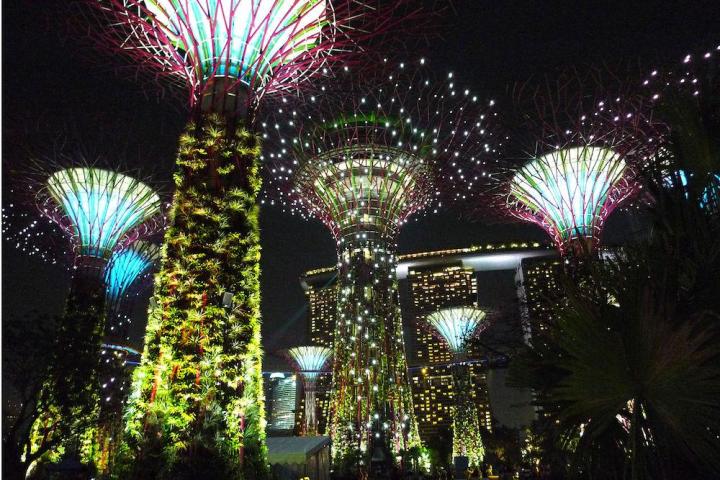
They might look like something out of a futuristic sci-fi movie, but believe it or not, these crazy structures actually exist, and have been standing tall in Singapore for well over a year now.
Supertree Grove is part of Singapore’s Gardens By the Bay – a massive tract of reclaimed land that the government has transformed into a giant garden. It’s part of a larger effort to eventually turn Singapore from a “garden city” to a “city in a garden;” with the goal to raise its residents’ quality of life by enhancing the city’s greenery.
The Supertrees are a stunning example of green architecture, and are much more than just gigantic tree-shaped edifices. In addition to serving as vertical gardens, they’re also designed to mimic the ecological functions of real trees. Each structure is outfitted with an array of photovoltaic cells that collect and store solar energy throughout the day – power that’s used to illuminate the garden when the sun goes down each night. Thanks to their unique shape, the trees also serve as rainwater collectors, and help funnel water to fountain displays and irrigation systems.
And of course, the bigger ones even have space for people. You can get an aerial view of the gardens from a skybridge attached to two of the larger trees, and can even grab a bite to eat in the big 160-foot one.
Find out more at GardensByTheBay
Images via Wikimedia Commons.



